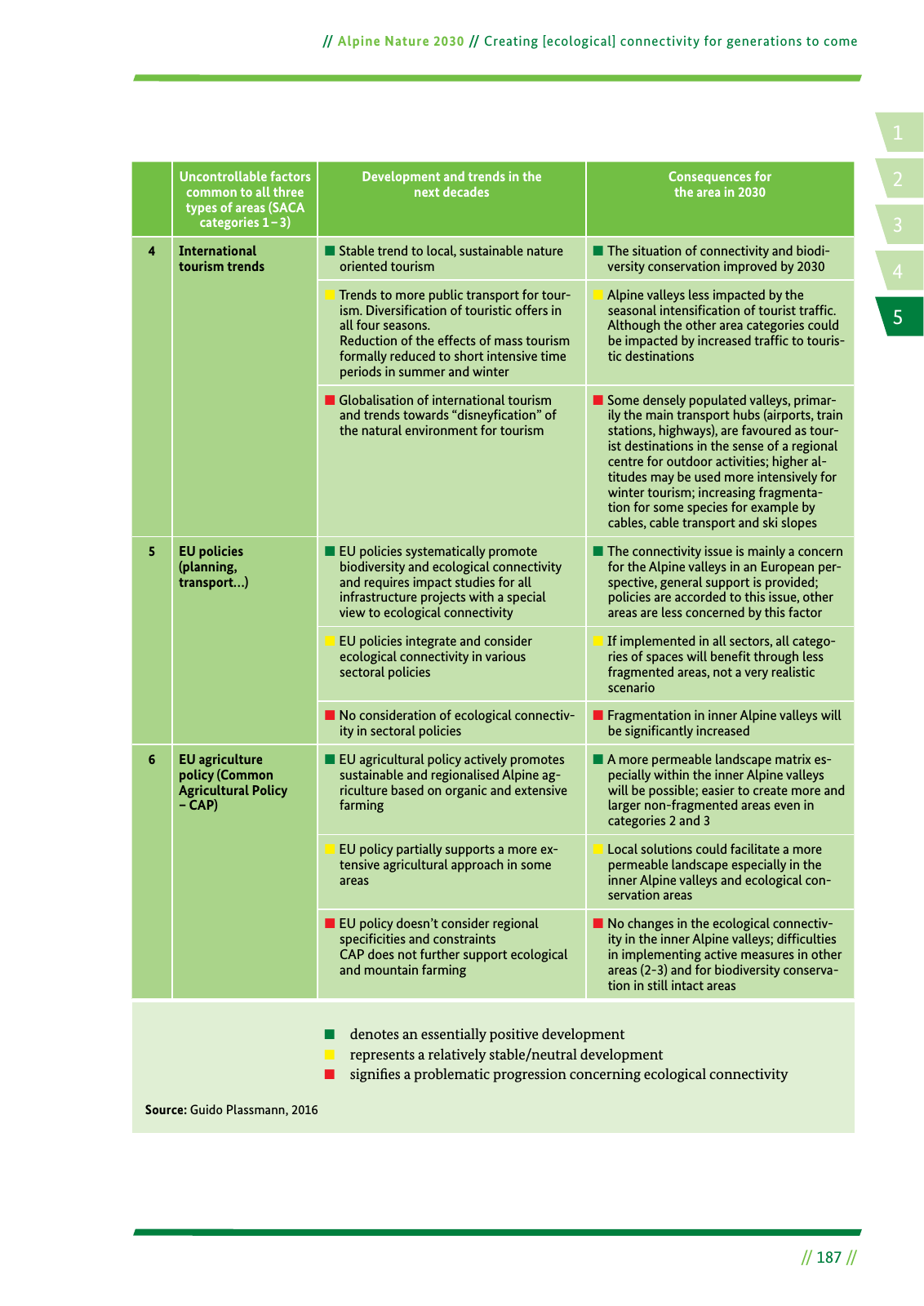14 2 5 3 Alpine Nature 2030 Creating ecological connectivity for generations to come 187 4 International tourism trends ó Stable trend to local sustainable nature oriented tourism ó The situation of connectivity and biodi versity conservation improved by 2030 ó Trends to more public transport for tour ism Diversi cation of touristic offers in all four seasons Reduction of the effects of mass tourism formally reduced to short intensive time periods in summer and winter ó Alpine valleys less impacted by the seasonal intensi cation of tourist traf c Although the other area categories could be impacted by increased traf c to touris tic destinations ó Globalisation of international tourism and trends towards disney cation of the natural environment for tourism ó Some densely populated valleys primar ily the main transport hubs airports train stations highways are favoured as tour ist destinations in the sense of a regional centre for outdoor activities higher al titudes may be used more intensively for winter tourism increasing fragmenta tion for some species for example by cables cable transport and ski slopes 5 EU policies planning transport ó EU policies systematically promote biodiversity and ecological connectivity and requires impact studies for all infrastructure projects with a special view to ecological connectivity ó The connectivity issue is mainly a concern for the Alpine valleys in an European per spective general support is provided policies are accorded to this issue other areas are less concerned by this factor ó EU policies integrate and consider ecological connectivity in various sectoral policies ó If implemented in all sectors all catego ries of spaces will bene t through less fragmented areas not a very realistic scenario ó No consideration of ecological connectiv ity in sectoral policies ó Fragmentation in inner Alpine valleys will be signi cantly increased 6 EU agriculture policy Common Agricultural Policy CAP ó EU agricultural policy actively promotes sustainable and regionalised Alpine ag riculture based on organic and extensive farming ó A more permeable landscape matrix es pecially within the inner Alpine valleys will be possible easier to create more and larger non fragmented areas even in categories 2 and 3 ó EU policy partially supports a more ex tensive agricultural approach in some areas ó Local solutions could facilitate a more permeable landscape especially in the inner Alpine valleys and ecological con servation areas ó EU policy doesn t consider regional speci cities and constraints CAP does not further support ecological and mountain farming ó No changes in the ecological connectiv ity in the inner Alpine valleys dif culties in implementing active measures in other areas 2 3 and for biodiversity conserva tion in still intact areas Uncontrollable factors common to all three types of areas SACA categories 1 3 Development and trends in the next decades Consequences for the area in 2030 ó denotes an essentially positive development ó represents a relatively stable neutral development ó signi es a problematic progression concerning ecological connectivity Source Guido Plassmann 2016

Hinweis: Dies ist eine maschinenlesbare No-Flash Ansicht.
Klicken Sie hier um zur Online-Version zu gelangen.
Klicken Sie hier um zur Online-Version zu gelangen.